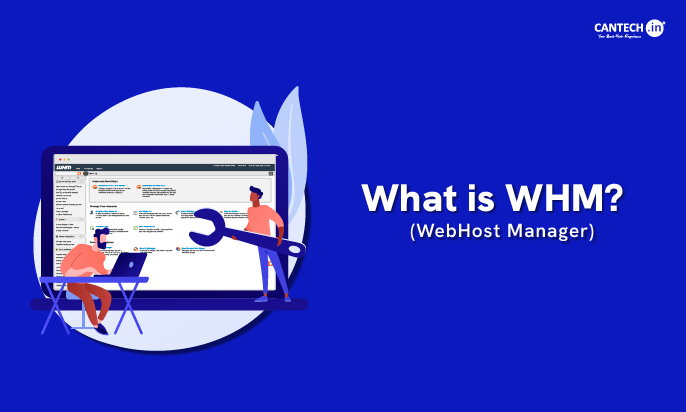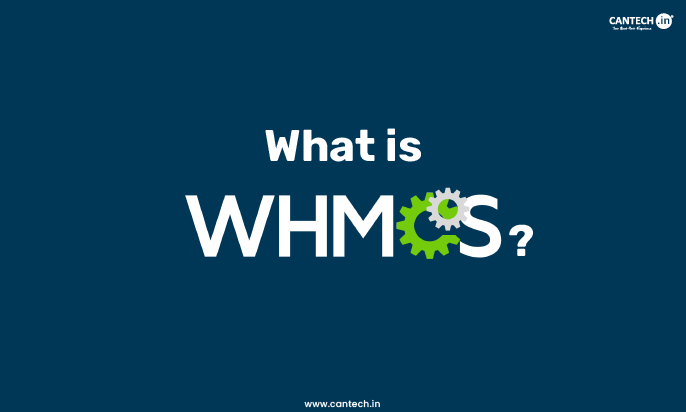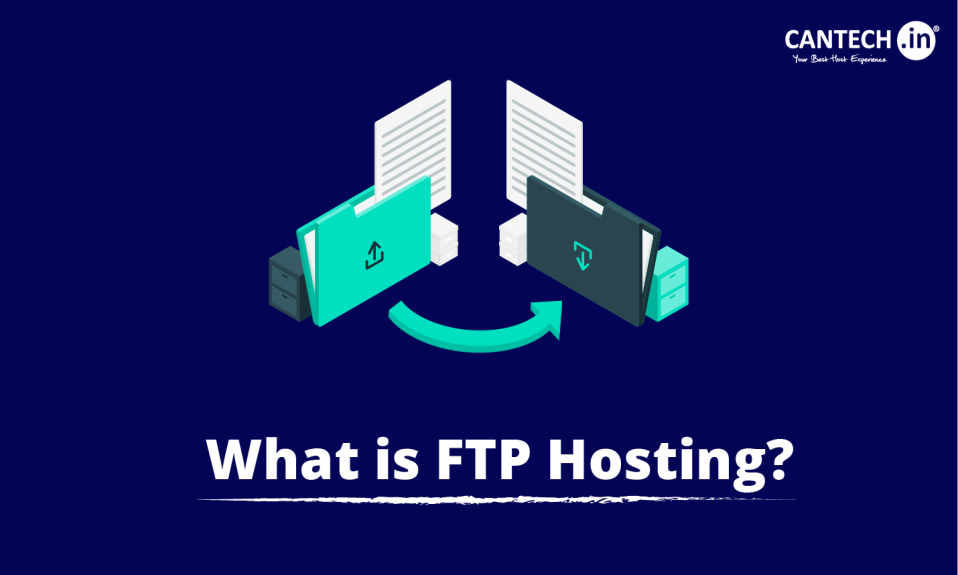Introduction to What is WHM
WHM stands for WebHost Manager, and the WHM full form highlights its role as a powerful tool for managing multiple hosting accounts efficiently. The WebHost Manager (WHM) is a critical tool used on the server and in your client accounts over which you want to control. If you are a web hosting beginner or a professional, you need to understand WHM and here we assume that you are entirely new to web hosting. Using this complete guide about WHM, we will learn what is WHM, what are key features of WHM are, how it differs from cPanel, and what you should know in the practical sense.
WHM or Web Host Manager is very useful for web hosting resellers. It is a hub to central control all server resources and individual cPanel accounts it hosts with one single account. All this means you can comfortably handle user accounts, allocate server space, monitor performance, and security measures from one intuitively performed interface. The centralized management cuts down significantly on time spent on routine tasks, and the operations go on smoothly. cPanel is the individual user’s control panel that exists as a part of the cPanel software. It is the equivalent of the master control panel.
This blog post will give you an in-depth explanation of WHM, how it functions, and the advantages of WHM, and you can compare WHM to other similar tools. In this article, we’ll go through different points of managing a WHM account and give you practical guidance and troubleshooting tips on how to solve problems that can occur. This guide is meant to serve as an easy entry into WHM and a way for people who already know WHM to gain a deeper understanding of its advanced features. By the end, you will have a decent grip on using WHM effectively for your web hosting environment.
Understanding WebHost Manager (WHM)
WebHost Manager is the powerful control panel mainly used for managing our servers by the web host providers. Unlike cPanel, which manages their websites by individuals, WHM is a tool for the server’s control over all the server resources and all cPanel accounts created on the server. Perhaps you can consider this WHM panel as the ‘master control panel’ that allows you to control everything from securing your servers, allocating resources, creating users, and billing all in one place. Efficient running of a web hosting business requires a deep understanding of WHM.
The suite of tools that WHM offers is comprehensive and designed to help manage your server and client accounts. These tools abound in managing and creating user accounts (managing WHM user accounts is easy and efficient), setting up email accounts and DNS records, and monitoring server performance. Because of its features, you can specify parameters such as bandwidth allocation, disk space limit, and other critical server resources. This fine-grain control helps utilize the resources optimally, avoiding oversubscription and getting maximum performance from every client. Using WHM, you can also implement security measures like installing the SSL Certificate or managing the firewall rules to protect your server and your client’s essential data.
Creating and managing cPanel accounts is a built-in key function within WHM. It means creating individual cPanel accounts for every client, assigning suitable resource limits (space on a disk, bandwidth, etc.), and configuring the other necessary things. It is easy to change accounts, suspend or terminate existing accounts, and do much of the work automatically. This is the reason why managing a large number of client accounts becomes very easy and hassle free with WHM. To run any web hosting business smoothly, knowing how to work with WHM accounts is essential.
WHM vs cPanel
WHM and cPanel are often misused, both used for something they are not for. These are essential tools, but are meant for different audiences to serve various purposes. cPanel is an end-user control panel that provides all website owners with tools to manage their websites, email accounts, databases, and other aspects of their websites. This is a user-friendly interface for ease of use. To gain a deeper understanding of how cPanel works and why it’s a go-to choice for website owners, explore our What is cPanel? guide.
However, WHM is just the administrative control panel, especially for web hosting companies and server administrators. With it, you have complete control over the entire server and all the cPanel accounts hosted on it. The WHM lets us manage the server resources, create or use cPanel accounts, set limits, monitor the server performance, and ensure security. In other words, WHM allows administrators to handle, supervise, and control the whole hosting infrastructure, and cPanel enables the website owners to run/manage their sites. And, these two work so well that it comes out as a single solution for web hosting management. It is essential to understand this distinction when using both tools effectively.
When speaking about WHM and cPanel, it is not a choice between two utilities, but an acknowledgment of the different functionalities can be made. Neither is better; they are complementary, and these are not alternatives. The reason is that a web hosting provider uses WHM to manage the server and their clients, while each client needs cPanel to manage their websites. The symbiotic relationship is pleasant, reliable, and efficient. There are always sections in a WHM guide on successfully working and integrating both platforms for full efficiency.
A comprehensive WHM guide would cover many functionalities, from the initial setup and configuration to advanced features and troubleshooting. Here’s a glimpse into some of the key features and their practical applications:
WHM Guide: Key Features and Practical Applications
Here’s a guide outlining seven WHM features with practical applications, each explained in three paragraphs. Remember that specific features and availability may vary depending on your WHM/cPanel version.
1. Account Management
WHM allows for streamlined creation, modification, and suspension of cPanel accounts. This simplifies the process of onboarding new clients or managing existing ones. You can easily adjust users’ resource limits (disk space, bandwidth), email accounts, and other settings. This centralized management significantly reduces the time spent on individual account configurations.
Imagine quickly increasing the disk space for a client experiencing storage issues. With WHM, you can do this with a few clicks, avoiding needing to access each cPanel. This centralized control improves efficiency and reduces potential errors.
2. Server Configuration
Among other things WHM allows you granular control of your server’s settings (Apache, PHP, security, etc.) It ensures the tightened performance and tight security. Settings can be customized to fit in with your web hosting related requirements and your client requirements to be able to achieve optimum website performance and stability. In addition, this level of control allows for the proactive measures required to be completed to ensure your server is safe from any threats, such as implementing security patches, firewalls, and others.
For example, you may need to edit the PHP settings for a specific client’s application. Without direct access to the server’s configuration files, you can do this globally and on a per-account basis using WHM. It simplifies complex server management tasks and helps nontechnical users accomplish them.
3. DNS Management
Tools consist of zone editors and DNS cluster management on WHM. Such an architecture allows Domain names and their linked records (A, MX, etc.) to come together seamlessly and efficiently. This is important because if the web address isn’t correctly entered, it won’t work, and the webpage or email service will not behave correctly. DNS management does not take long and protects your downtime; visitors can always reach your client’s websites.
It allows for easy adding, modifying, or deleting of DNS records, which helps improve your domain name management. When you change WHM, it automatically decreases your chances of making a manual error, and decreases the reliability of your DNS configuration.
4. Backup and Restore
Automated backups of entire servers and/or particular accounts are just what WHM offers. With this, your data is protected against loss in case of hardware failure, software errors, or other unlikely events. Backups are done regularly to guarantee business continuity in the case of a disaster and reduce downtime. The fast speed of restoring backups minimizes data loss and allows recovery.
There are different backup frequencies, storage, and backup provided by WHM. You can have them schedule the backups to run at specific intervals, keeping your data safe and taking no manual intervention. Restoring these backups takes very little time and prevents downtime.
5. Security Features
It includes several security tools like brute force protection, firewall management, and SSL certificate installation. This will provide more overall security to your server and ensure your customers’ websites remain free from all kinds of security threats. This is crucial in protecting your server and clients from unauthorized access. These tools considerably raise the server’s security posture and make the online world safer.
Through WHM, you are simplified to implement security protocols such as two factor authentication and security updates. This increases the server’s security and the individual client accounts stored on it.
6. Email Management
WHM manages user email accounts, including email quotas, filters, and email forwarding rules. This guarantees that all your clients get sufficient efficiency and reliability from email services. By centralizing email management, efficiency is increased, and the setup of accounts and maintenance thereof is simplified. For large numbers of email accounts, this makes managing very easy and saves valuable time. Individual site or global autoresponders and spam filter features can be easily implemented and used. This helps ensure every client has reliable, well-managed, and secure email services.
7. Resource Usage Monitoring
CPU usage, Memory usage, Disk space, etc., are all monitored tools WHM provides. By doing this, one can proactively identify and solve performance bottlenecks. This helps monitor these resources and prevent downtime without warning and at the same time, optimizes server performance. It provides information to help allocate resources and optimize optimal performance for all hosted websites.
You can identify resource intensive accounts, making it easier to take proactive action there so that the performance issues don’t start harming your clients. It brings about better client satisfaction and a more stable hosting environment.
Benefits of WHM
Here are five key benefits of using WHM (Web Host Manager), each explained in two paragraphs:
1. Centralized Control and Management
WHM provides a single interface for managing all aspects of your server, from user accounts to server configurations. This eliminates the need to use multiple tools or access the server command line directly, streamlining your workflow and saving you valuable time. The consolidated view efficiently manages various client accounts and server resources, making it ideal for managing large websites and users.
2. Enhanced Efficiency and Automation
WHM offers automated features for tasks like account creation, backup scheduling, and software updates. This automation reduces manual intervention, minimizes errors, and improves overall efficiency. This frees up your time to focus on other critical aspects of your business, such as client support and marketing.
3. Improved Security
WHM integrates various security tools that enhance the protection of your server and client websites. These tools include brute force protection, firewall management, and SSL certificate installation, minimizing the risk of security breaches and protecting your clients’ data. Proactive security measures reduce the chances of security vulnerabilities and contribute to a more secure hosting environment.
4. Scalability and Flexibility
WHM allows you to scale your server resources and adapt to growing demands quickly. You can add or remove accounts, adjust resource limits, and upgrade your server hardware as needed without significant disruptions. This flexibility allows you to accommodate changes in your client base and business requirements.
5. Streamlined Client Management
WHM simplifies the process of managing multiple clients and their respective websites. You can easily create, modify, and manage cPanel accounts, allocate resources, and provide WHM support, all from a central location. This centralized approach simplifies client onboarding, resource allocation, and issue resolution, improving your overall customer support efficiency.
Conclusion
If you’re involved with managing a web hosting server, you cannot live without it: WHM or Web Host Manager. It has good features that make it easy to manage the server resource, user account, and security settings. Knowing WHM is very important if a web hosting business is to run smoothly and efficiently. Any web hosting professional needs the ability to create and manage WHM accounts efficiently.
The key value in learning WHM is that it allows you to streamline operations, increase server performance, and improve the client experience. If you know how to use it, you can handle many customer accounts, use resources well, and control problems before they happen. That means a more stable, safe, and prosperous web hosting environment. A WHM guide in a well-structured way, precisely what we have above, gives you enough foundational knowledge to be confident to run your server.
The difference between a successful web hosting business and one failing to meet demands lies in using the appropriate tools, WHM. Many hosting providers rely on this control panel as the backbone of their operations; they can scale the operations, handle resources wisely, and provide a high-quality service. It is time well spent that you give it time to understand its various features and functionalities. A person who is about to enter the arena of web hosting for the first time or is already a veteran will see how a basic understanding of WHM is beneficial.
FAQs
What is the difference between cPanel and WHM?
cPanel is the control panel individual website owners use to manage their websites. It is user-friendly and focuses on website-specific tasks. WHM, on the other hand, is the administrative control panel used by web hosting providers. WHM allows for managing multiple cPanel accounts and server resources. cPanel manages individual sites, while WHM manages the entire server and all its hosted websites.
What is WHM in cPanel?
WHM, or Web Host Manager, serves as the management layer above cPanel that lets server administrators create, modify, and monitor multiple cPanel user accounts from a single dashboard. By granting command-line-level control through a graphical interface, WHM in cPanel makes it possible to set resource limits, schedule backups, apply security patches, and perform routine maintenance without directly editing configuration files.
How to Use WHM?
To use the WHM in cPanel, enter the servers public IP address or domain name in a browser, adding port 2087, so the URL looks like https://198.51.100.1:2087 or https://example.com:2087. After supplying root or a similarly privileged login, a menu of tools appears, letting you create new cPanel accounts, adjust quotas, review logs, and fine-tune server-wide settings in one place.
How much does WHM Cost?
WHM isn’t sold as a standalone product. It’s typically bundled with cPanel, which is a licensed software. The cost depends on the licensing agreement with cPanel. The price varies based on the number of accounts you need to manage. Contact cPanel directly for current pricing and licensing options.
Is WHM Challenging to Learn?
The learning curve for WHM depends on your prior experience with server administration. While it’s more complex than cPanel, it has a relatively intuitive interface. Numerous online resources, tutorials, and documentation are available. With dedicated effort and practice, mastering WHM is achievable for most users.
Can I Use WHM on Any Server?
WHM is designed to work specifically with cPanel. Therefore, you need a compatible server operating system (CentOS or CloudLinux) to install and run WHM and cPanel. The server must also meet the minimum system requirements specified by cPanel for optimal performance. Consult the cPanel documentation for compatibility details.
What are the Security Implications of Using WHM?
WHM, like any administrative tool, requires careful security management. Regular software updates are crucial to patch vulnerabilities. Strong passwords and two-factor authentication are recommended for added security. Monitoring server logs and implementing firewalls are essential to protect against unauthorized access. Proactive security measures are paramount to maintaining a secure server environment.
What are the Benefits of Using WHM for my Web Hosting Business?
WHM centralizes server and account management, improving efficiency. It allows for easy scaling of your hosting business as your client base grows. It provides granular control over resources, preventing oversubscription and ensuring optimal performance. WHM simplifies the creation and management of multiple cPanel accounts for your clients. This centralized management streamlines operations and reduces the time spent on routine tasks.








